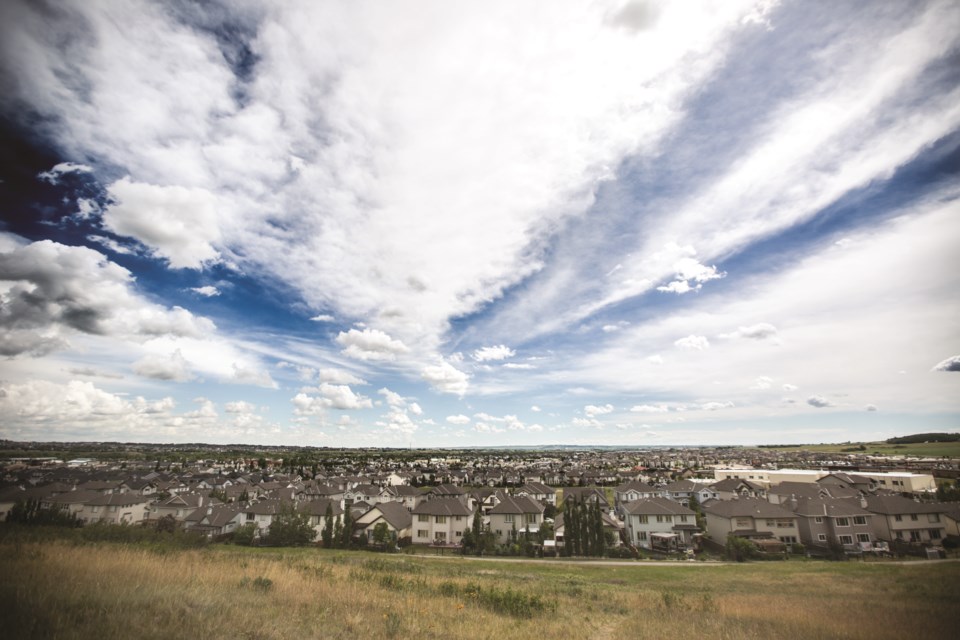The Town of Okotoks' Municipal Development Plan (MDP) has entered into the final revision stage, following the conclusion of the public engagement and feedback period.
The online survey, running from June 6, will come to its conclusion on July 12 before the MDP is ready for final tweaks before being presented to council to begin the adoption process.
"A Municipal Development Plan is the highest level policy document that a town has in terms of planning," said Colton Nickel, Okotoks development planner. “So it shapes how the community sees itself growing and developing over the next 40 to 60 years: how our communities are going to look, how our park spaces are going to look, transportation network, what types of housing we want to have, sustainability methods we want to have in place in our community.
"It’s a very high-level and wide-ranging document.”
As of July 5, Nickel said there had been 140 complete responses to the survey, but said the Town had engaged with other demographics prior to the survey. This engagement included working with students through the public and Catholic school divisions, attending the Seniors' Tea to speak with elderly residents and talking with residents at the recreation centre.
“Although you always want to see more, and we’d love to see 80-90 per cent uptake if possible, it’s challenging with these high level policy documents because people don’t necessarily see how it affects them on a day-to-day basis,” he said. “It’s a tricky balance to explain this is how it’s going to shape your community in the future and it’s a very important document.
“When it’s such a long-term plan and at such a high level like an MDP is, it can be tricky to engage people. Of course we’d like to see more, but I think we got a lot of great feedback and we’ll definitely be taking it into account as we refine the municipal development plan.”
Titled "Okotoks 2080," the new MDP will guide future growth and development as the town’s population grows from nearly 30,000 today to an anticipated 70,000-90,000 people by 2080.
The MDP includes goals that describe the vision for the future of the community as well as policies to guide developers' proposals and the Town’s decisions on land use and development.
The update will replace the old MDP, titled the “Legacy Plan,” adopted in 1998 which had a finite growth model—a population cap at 30,000—due to the limited capacity of the Sheep River.
With the water situation still in the works, Nickel said this plan accounts for that in its managed growth philosophy, through sustaining water conservation and minimizing water use through various techniques.
“There’s a lot of sustainability mechanisms and plans in this MDP that are considered in regards to water,” he said. “One is requiring integrated water management plans from developers, showing exactly all of the potential impacts that their development might have on the water supply.”
Nickel said the Town is still working on long-term solutions for water, and the plans and strategies laid out in the MDP will continue to develop with the water situation.
A greater sense of place, additional downtown urban design, and sustainable transportation are some of the primary differences in the new MDP, with a focus on a range of housing for all life stages, said Nickel.
“Right now Okotoks is roughly 77 per cent single family homes,” he said. “There’s been a lot of desire from the community to see a greater range of housing: options for seniors, options that are affordable for their kids to stay in town. So that’s definitely one key component of this plan.”
Another key focus in the MDP is diversifying the tax base.
“Right now Okotoks has a high residential tax base, and a sustainable municipality has a greater range, a good balance between their non-residential, commercial taxes and their residential taxes," he said.
This imbalance is addressed in the MDP through aiming to see more “employment focused lands”—or industrial or commercial areas spread all throughout town and within the neighbourhoods, said Nickel.
Another big difference is something called a “Neighbourhood Hub,” which Nickel said the Town would be proposing for any new communities.
“Every new community would have its own small, mixed-use commercial centre with little shops, maybe a café or restaurant, park spaces. Just more integrated into the community,” he said. “ A lot of them right now, they have to drive places to get their daily needs, so we’re hoping to have more things to do in walking distance.”
The revision process of the draft, using community feedback and survey results, will continue for the month of July.
The next draft will be available in August, and will go to council for first reading in September. If it passes first reading, it will go back to council for a public hearing in October, before going to the Calgary Metropolitan Region Board for a referral process, which will take about 10 weeks.
The MDP will then come back to council in January for the third and final reading.




